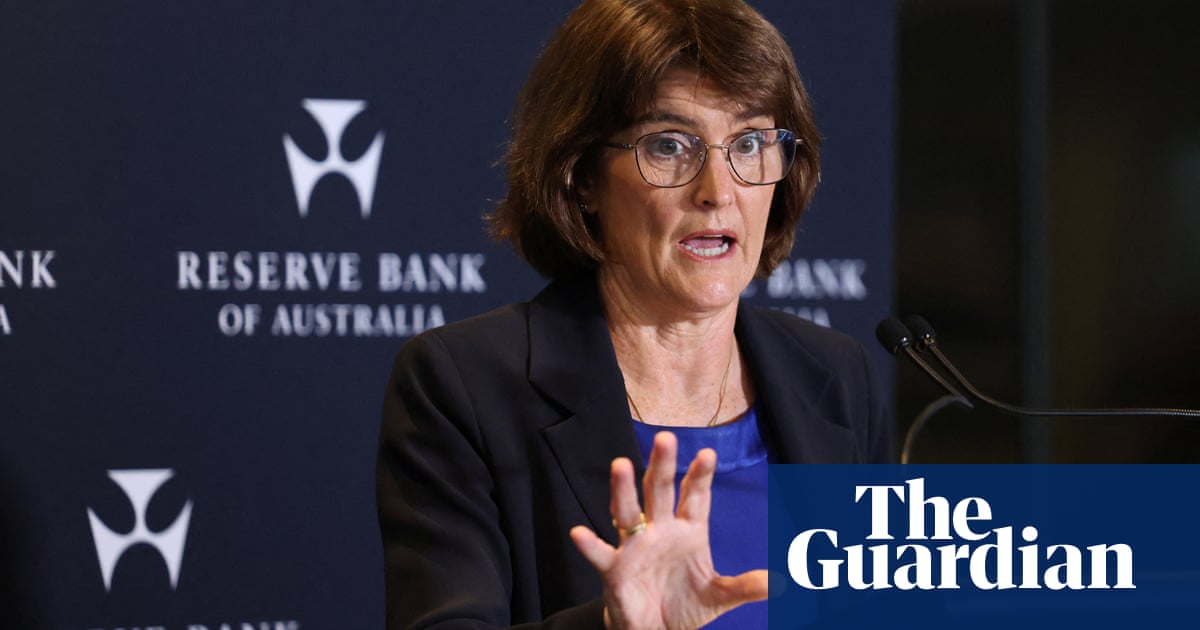Deutsche Bank says the Reserve Bank of Australia will follow the script from previous crises and deliver a double rate cut when it next meets in May, as Donald Trump’s threats of even higher tariffs on China added to fears of a looming global trade war.
Financial markets and economists were in agreement the RBA would lower the cash rate from 4.1% to 3.85% in five weeks’ time, saying the decision is “locked in” after the US president’s “liberation day” trade on 2 April sent financial markets tumbling late last week.
A 50 basis-point RBA rate cut would offer some silver lining to indebted households by lowering the monthly repayments on a $500,000 home loan by $152, assuming a home loan rate of 6% now.
If rates were to drop by one percentage point by the end of this year – as more economists now predict – then families with big mortgages will be saving hundreds of dollars a month in lower interest payments.
As investors struggle to divine the next move in what many fear is an escalating trade war, Deutsche Bank’s chief economist, Phil O’Donaghoe, said the “global shock” from the most protectionist US trade policy in more than a century justified a more aggressive move from the RBA.
O’Donaghoe said while Australia had escaped the worst of the additional reciprocal tariffs imposed on the European Union and countries such as China and Japan, “Australia does not fly under the radar in a global risk-off environment of the scale demonstrated by moves in financial markets in the past few days”.
He drew parallels with RBA’s response during previous crises, including the global financial crisis and, more recently, the Covid-19 pandemic.
“Unless there is a sudden reversal – or significant watering down – of US tariff rates on Australia’s key trading partners in Asia, especially China, the consequences for business confidence, consumer confidence and domestic growth justify the RBA making an outsized shift away from its ‘restrictive’ policy stance,” O’Donaghoe said.
“This is one of the few occasions in history where a global ‘shock’ outweighs prevailing domestic economic considerations.”
O’Donaghoe said he still believed the cash-rate cuts would end at 3.1% – from 4.1% now – although the central bank would get there more quickly, by late this year rather than in early 2026.
after newsletter promotion
Financial markets have priced in a chance of a 50 basis point rate cut next month, but, like most economists, traders believe a more orthodox 25 basis point cut is more likely.
The latest rates prediction comes as share markets settled following days of near-panicked selling on Wall Street and on bourses around the world.
The Australian dollar steadied at a little over US60 cents on Tuesday, while the benchmark S&P/ASX 200 share market index bounced 2.3% to 7510 points, to still be more than 5% lower over the past week.
The return of uneasy calm was despite Trump threatening an extra 50% lift in duties on Chinese goods on Monday night.
NAB chief economist Sally Auld said a rate cut at the May RBA monetary policy board meeting still remained the most likely outcome.
Auld, however, said she had expected four cuts to 3.1% by early next year, but that the trade turmoil meant the cash rate would reach that level by late 2025 instead.
If the trade war escalated, the RBA may need to deliver deeper cuts into the “mid to high twos”, she said.
“A big piece of this is how China fares in all of this. I do think the Chinese will respond with fiscal and monetary stimulus to put a floor under growth. And our starting point is pretty favourable: we have a low unemployment and inflation, and plenty of scope to ease policy.”
Whatever unfolds over coming weeks and months, “we are not going back to a world of zero tariffs,” Auld said.
